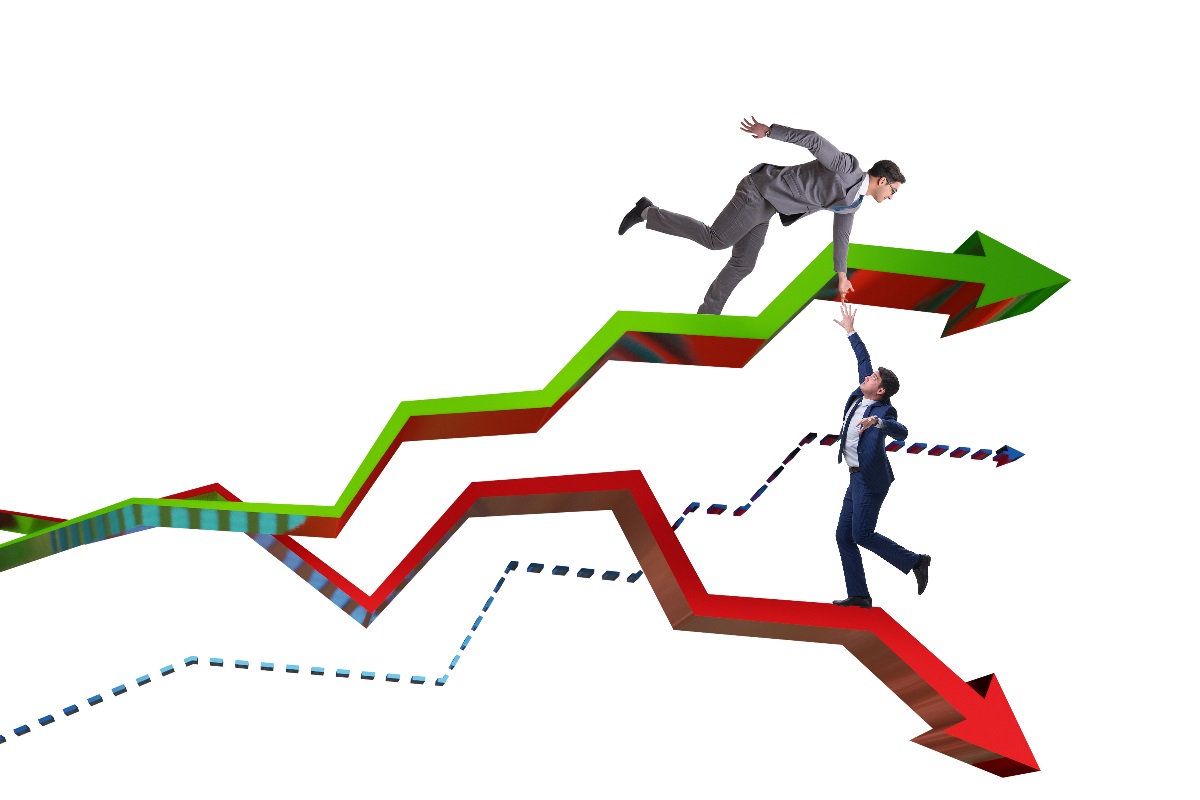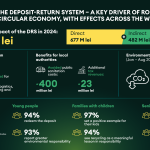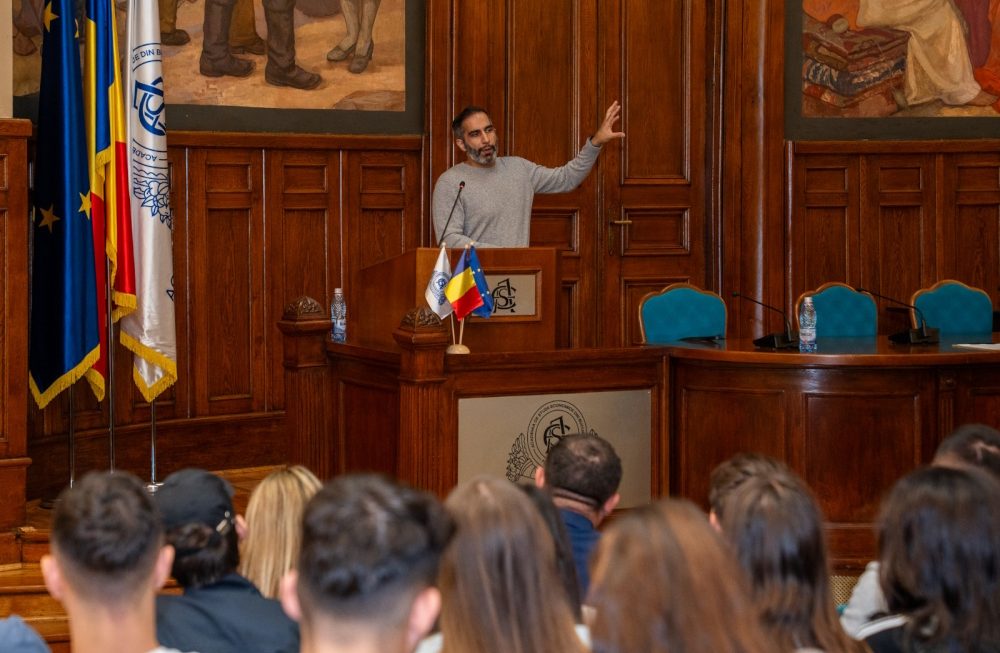
What’s lurking on the horizon?
Foto: Elnur_ / depositphotos.com
For almost three years we have been living with our hearts in our mouths and our eyes on horizons that seem increasingly dark. The COVID-19 pandemic has thrown us into a sea of uncertainty and into an economic crisis. But the ongoing war in Ukraine is causing a significant economic disruption globally, fueling the inflation, which remains at very threatening levels. And the fear of war is still here. According to a recent “Chief Economists Outlook” survey by the World Economic Forum (WEF), the world is at a point of “significant economic danger”. The report comes back with a World Bank prediction that 2022 is one of the worst years in terms of global poverty since the turn of the century. Recession fears are raising everywhere. According to the WEF, the expectations for economic growth have been reduced around the world, with 64% of analysts seeing a global recession as “somewhat likely”. Almost 90% of the surveyed economists expect growth in Europe to be small or very small due to the war in Ukraine, high inflation and threats to the energy supplies. And the growth forecasts are expected to be worse next year across the continent. The chief economists surveyed are “nearly unanimous” that the wages will not be able to keep up with the price rises this year and in 2023, and the threat to the basic living standards will increase the risk of societal disruption. Almost 80% of respondents say they expect social unrest to be triggered in the low-income countries by the rising costs. The WEF report points out that the global political instability is now at its highest level since the 2008 financial crisis.
At the same time, in a separate interim report, the OECD concludes that the global economic outlook has “darkened” and this has been exacerbated by Russia’s decision to launch military operations in Ukraine. The world economy is paying a high price for Russia’s unprovoked, unjustified and illegal war of aggression against Ukraine. The war drags down the economic growth and puts additional pressure on prices, especially for food and energy. The Managing Director of the International Monetary Fund, Kristalina Georgieva, told Georgetown University in the autumn that the IMF cut again its forecasts for the global economic growth in 2023: “things are more likely to get worse before they get better,” Georgieva said, adding that the Russian invasion of Ukraine dramatically changed the IMF’s outlook on the economy. Also the Organization for Economic Co-operation and Development signaled that the global economy would see a $2.8 trillion drop in output in 2023 because of the war. The outlook is gloomy, as multiple shocks, including the senseless war in Ukraine, have completely changed the economic picture. In this picture, far from being transitory, the inflation has become more persistent, more “stubborn” than expected and will stay with us for a while.
Time Magazine wrote that, if Russia cuts off the gas, “the European consequences will be massive and the global economic consequences could be tragic.” According to the IMF, a complete shutdown of the natural gas from Russia could cut the GDP by up to 6% in countries such as Hungary, Slovakia and the Czech Republic. Struck by an unprecedented inflationary wave, much of the population will have to choose between having heat in the house or having food on the table. An analysis by Foreign Policy shows that we have no idea how bad Europe’s energy crisis is. Very high prices bring terror among the citizens, block industries, and panic the politicians. The EU leaders are trying to ease the financial crisis through emergency interventions, including massive energy rationing. But Politico writes that Europe’s energy woes are fueling populism. As the expert Anders Aslund wrote, “the skyrocketing energy prices are a disaster for the European economy and its politicians. But given how reckless the European energy policies have been, the economic pain they’ve caused come as no surprise.” Winter will certainly not surprise anyone, but the “economic frost” that will come will certainly freeze much of the citizens’ money and the continent’s economic growth.
According to the IMF experts, the main factors of this pessimistic outlook is the extreme financial condition of the population due to very high inflationary pressures, to which the economic fall of Russia, the slowdown in China’s growth rate and the substantial shrinkage of the American consumer spending adds at global level. While most analysts have reached a consensus on a global recession likely sometime in 2023, no one is venturing to predict how bad it will be or how long it will last. The economic outlook thus remains marked by an exceptional degree of uncertainty, as Russia’s war of aggression against Ukraine continues, and the potential for new economic disruptions is far from exhausted. For the Europeans, the biggest threats are the energy market prices and the risk of shortages and blackouts in the winter that has just begun. And the EU remains directly and indirectly exposed to further shocks to other commodity markets reacting to geopolitical tensions. Some analysts point out that, as the current year draws to a volatile end, major economies such as the US and the EU are already showing signs that they will experience “inflationary recessions” in the next 12 to 18 months and are facing growing concerns about the financial instability. At global level, the economic growth is at risk of being sensitively close to the 2% limit, with high interest rates as a key factor in this restraint, in an attempt to stop the rampant inflation. And the combination of falling global demand, rising debt levels, rising money (high interest rates) and a strengthening US dollar is overburdening the weak (developing) economies, widening the trade deficits and limiting their financial resources.
For Romania, the European Commission (EC) sees a frail economic growth over the next two years, estimating that the real GDP will grow by 1.8% in 2023 and 2.2% in 2024, due to the rising inflation, tightening financial conditions and the consequences of the Russian war of aggression against Ukraine. According to the EC, the inflation will rise to a high level at the end of this year, followed by a high level in 2023, too. The European Commission (EC) expects the inflation to reach a high level at the end of 2022 and to remain high in 2023, before coming down in 2024. The unemployment will remain at around 5-6%. The government deficit is expected to gradually decline to 4.8% in 2024, driven by high revenues and declining current expenditure as a share of GDP, mainly on the back of significant nominal GDP growth. The debt-to-GDP percentage will be around 47.6% in 2024. Overall, European experts estimate that the real GDP will grow by 5.8% in 2022, by 1.8% in 2023 and by 2.2 % in 2024. In terms of risks, the macroeconomic forecasts point to a downside, as the delays in the implementation of Romania’s recovery and resilience plan could lessen investment and economic growth. According to the EC, the inflation will peak at the end of this year, followed by a high level in 2023 as well.
Commission’s macroeconomic forecasts lean toward a negative trend, citing delays in financing through the PNRR, which would cause an economic downturn and a low level of investment.
But the outlook may be even sharper, because no one can define what new challenges lurk beyond the dark horizons we are already heading toward.
Daniel Apostol
Share
Share















